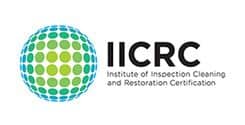Floods can cause extensive damage to homes and properties. When a flood occurs, it is essential to act quickly to minimize the damage and restore the affected area. One crucial aspect of flood restoration is controlling humidity levels. This article will discuss the importance of humidity control during flood restoration and provide tips on how to manage it effectively.
Why is Humidity Control Important in Flood Restoration?
- Preventing Mold Growth: Mold spores are present in the air and can quickly grow in damp and humid conditions. High humidity levels provide the perfect environment for mold to thrive, leading to potential health risks and further damage to your property. By controlling humidity levels during flood restoration, you can prevent mold growth and protect your home and family from the harmful effects of mold exposure.
- Protecting Building Materials: Excessive humidity can cause significant damage to building materials, such as wood, drywall, and insulation. High moisture levels can cause wood to warp, swell, and rot, while drywall and insulation can become saturated and lose their effectiveness. Controlling humidity during flood restoration helps to protect these materials from further damage and ensures the structural integrity of your home.
- Speeding Up the Drying Process: Humidity control is essential for speeding up the drying process during flood restoration. High humidity levels can slow down the evaporation of water from affected materials, prolonging the drying process and increasing the risk of mold growth and further damage. By maintaining proper humidity levels, you can accelerate the drying process and minimize the overall restoration time.
- Improving Indoor Air Quality: Controlling humidity levels during flood restoration is crucial for maintaining good indoor air quality. High humidity can lead to increased levels of allergens, such as dust mites and mold spores, which can cause respiratory issues and other health problems. By managing humidity levels, you can improve indoor air quality and create a healthier living environment for you and your family.
How to Control Humidity During Flood Restoration
- Remove Excess Water: The first step in controlling humidity during flood restoration is to remove as much excess water as possible. This can be done using pumps, wet vacuums, or mops and buckets. Removing standing water will help to reduce the overall humidity levels in the affected area and prevent further damage to your property.
- Use Dehumidifiers: Dehumidifiers are essential tools for controlling humidity levels during flood restoration. These devices work by removing excess moisture from the air, helping to maintain a healthy humidity level and speed up the drying process. It is important to choose a dehumidifier with the appropriate capacity for the size of the affected area and to monitor its performance regularly to ensure it is working effectively.
- Increase Ventilation: Increasing ventilation is another effective way to control humidity levels during flood restoration. Opening windows and doors, using exhaust fans, and setting up air movers can help to promote air circulation and reduce humidity levels. However, it is essential to consider the outdoor humidity levels when using this method, as bringing in humid air from outside can make the situation worse.
- Monitor Humidity Levels: Regularly monitoring humidity levels during flood restoration is crucial for ensuring that they are being effectively controlled. You can use a hygrometer, a device that measures humidity levels, to keep track of the moisture levels in the affected area. This will help you to determine whether your humidity control efforts are working and make adjustments as needed.
- Seek Professional Help: In some cases, controlling humidity levels during flood restoration can be a challenging task. If you are struggling to manage humidity levels or are concerned about the potential for mold growth, it is essential to seek professional help. A professional flood restoration company will have the expertise and equipment necessary to effectively control humidity levels and restore your home to its pre-flood condition.
Conclusion
Controlling humidity levels during flood restoration is crucial for preventing mold growth, protecting building materials, speeding up the drying process, and maintaining good indoor air quality. By following the tips outlined in this article, you can effectively manage humidity levels and ensure a successful flood restoration process. However, if you are unsure about how to control humidity levels or are concerned about the potential for mold growth, it is essential to seek professional help to ensure the safety and well-being of your home and family.







